We shape our tools, and then they shape us.
“We shape our tools; thereafter, they shape us,” noted media scholar John Culkin. It follows that evermore-powerful tools shape us in evermore-powerful ways—and few, if any, promise to do so as deeply as artificial intelligence.
There is no word in English for the dizzying mix of fascination, yearning and anxiety that mark contemporary discussions of AI. Every position is taken: Entrepreneurs wax breathlessly about its promise. Economists ponder its potential for economic dislocation. Policy-makers worry about reining in its potential for abuse. Circumspect engineers will tell you how much harder it is to implement in practice than headlines suggest. Activists point out AI’s ability to quietly lock in our unconscious (and not so unconscious) biases, even while some of their peers are busy applying AI to try to overcome those very same biases. Techno-utopians look forward to an inevitable, ecstatic merger of humanity and machine. Their more cynical contemporaries worry about a loss of human control.
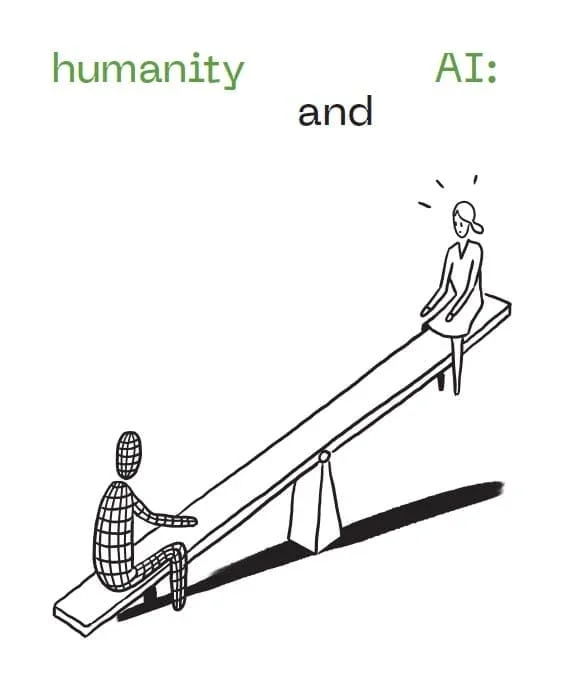
This diversity is fitting, for all of these positions are likely well-founded to some degree. AI will increase wealth, and concentrate wealth, and destroy wealth—all at the same time. It will amplify our biases and be used to overcome them. It will support both democracy and autocracy. It will be a means of liberation from, and subjugation to, various forms of labor. It will be used to help heal the planet and to intensify our consumption of its resources. It will enhance life and diminish it. It will be deployed as an instrument of peace and as an instrument of war. It will be used to tell you the truth and to lie to you. As folk singer Ani DiFranco observed, every tool is a weapon, if you hold it right.
One thing we know: AI will not enter the scene neutrally. Its emergence will be conditioned as much by our cultural values, our economic systems, and our capacity for collective imagination as by the technology itself. Is work drudgery or dignity? Who should decide what gets built? What should we not do, even if we can? Who matters? And what do we owe one another, anyway? How we answer these kinds of questions—indeed, whether we ask them at all—hints at the tasks we might assign to artificial intelligence and the considerations that will guide and constrain its emergence.
Between agony and opulence
Here in the West, AI is emerging at a moment of enormous imbalance of power between the techne—the realm of the builders and makers of technology—and the polis: the larger, social order. Techne has merged with the modern market and assumed, in places, both its agenda and its appetites.
An accelerating feedback loop is under way: powerful algorithms, deployed by evermore powerful enterprises, beget greater usage of certain digital products and platforms, which in turn generate ever-larger volumes of data, which inevitably are used to develop evermore effective algorithms; and the cycle repeats and intensifies. In the guise of useful servants, AI algorithms are pushing into every crevice of our lives, observing us, talking to us, listening to us. Always on, in the background, called forth like a djinn with a magic phrase: are they learning more about us than we know about ourselves? or misunderstanding us more than the deepest cynic might?
Which is worse?
Those who control these algorithms and the vast troves of data that inform them are the new titans. Of the ten richest Americans, eight are technologists with a significant stake in the AI economy.1 Together they own as much wealth as roughly half of humanity.
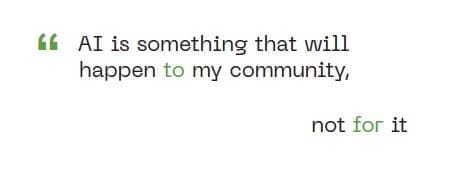
Ties that bind—and sever
But not just new economic thinking will be required. In a world where a small constellation of algorithmic arbiters frame what you see, where you go, whom you vote for, what you buy and how you are treated, threats to critical thinking, free will and social solidarity abound. We will use AI to shape our choices, to help us make them, and, just as often, to eliminate them. The more of our autonomy we cede to the machines, the more dependent we may become.
We are also just now beginning to understand how the algorithms that power social media amplify certain communities, discourses, politics and polities while invisibly suppressing others.
Liberal democracies are, at their core, complex power-sharing relationships, designed to balance the interests of individuals, communities, markets, governments, institutions and the rest of society’s messy machinery. They require common frames of reference to function, rooted in a connective tissue of consensual reality. No one is really sure whether our algorithmically driven, hypertargeted social media bubbles are truly compatible with democracy as we have understood it. (That’s a point well understood by both Cambridge Analytica, which weaponized AI to shatter the commons, and white nationalists, who’ve sought to legitimize and normalize their long-suppressed ideologies amid the shards. Both exploited precisely the same techniques.)

And all this is before so-called deepfakes—AI forgeries that synthesize apparent speech from well-known figures—and other digital chicanery are released at scale. There has been much hand-wringing already about the propaganda dangers of deepfakes, but the true power of such weaponized misinformation may, paradoxically, not be in making you believe an outright lie. Rather, it may simply suffice that a deepfake nudges you to feel a certain way—positively or negatively—about its subject, even when you know it’s not real. Deepfakes intoxicate because they let us play out our pre-existing beliefs about their subjects as we watch. What a buffoon! or That woman is a danger! They trip our most ancient neural circuits—the ones that adjudicate in-groups and out-groups, us and them, revulsion and belonging. As such, AI may be used to harden lines of difference where they should be soft and to make the politics of refusal—of deconsensus and dropping out—as intoxicating as the politics of consensus and coalition building.
Meanwhile, it is inevitable that the algorithms that underwrite what’s left of our common public life will become increasingly politically contested. We will fight over AI. We will demand our inclusion in various algorithms. We will demand our exclusion from others. We will agitate for proper representation, for the right to be forgotten and for the right to be remembered. We will set up our own alternatives when we don’t like the results. These fights are just beginning. Things may yet fall apart. The center may not hold.
Nudging our better angels
And yet, even though all of these concerns about politics and economics are legitimate, they do not tell anything like the complete story. AI can and will also be used to enrich the human spirit, expand our creativity and amplify the true and the beautiful. It will be used to encourage trust, empathy, compassion, co-operation and reconciliation—to create sociable media, not just social media.
Already, researchers have shown how they can use AI to reduce racist speech online, resolve conflicts, counter domestic violence, detect and counter depression and encourage greater compassion, among many other ailments of the human soul. Though still in their infancy, these tools will help us not only promote greater well-being but also demonstrate to the AIs that observe human nature just how elastic human nature is. Indeed, if we don’t use AI to encourage the better angels of our nature, these algorithms may come to encode a dimmer view and, in a reinforcing feedback loop, embolden our demons by default.
An abundance of prediction, a scarcity of wisdom
AI will not only emulate human intelligence; it will also transform what it means for people to perceive, to predict and to decide.
When practical computers were first invented—in the days when single machines took up an entire floor of a building—computation was so expensive that human beings had to ration their own access to it. Many teams of people would share access to a single computational resource, even if that meant running your computer program at four in the morning.
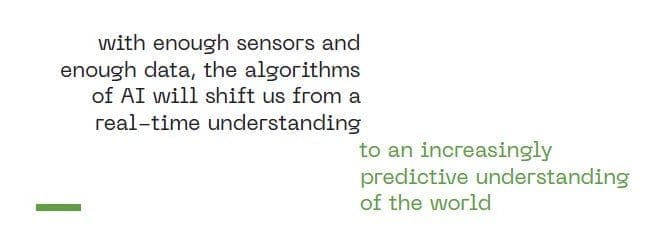
Now, of course, we’ve made computation so absurdly cheap and abundant that things have reversed: it’s many computers that share access to a single person. Now, we luxuriate in computation. We leave computers running, idly, doing nothing in particular. We build what are, in historical terms, frivolities like smart watches and video games and mobile phones with cameras optimized to let us take pictures of our breakfasts. We expand the range of problems we solve with computers and invent new problems to solve that we hadn’t even considered problems before. In time, many of these frivolities have become even more important to us than the serious uses of computers that they have long-since replaced.
The arrival of AI is fostering something deeply similar—not in the realm of computation but in its successors: measurement and prediction.
As we instrument the world with more and more sensors, producing ever more data and analyzing them with evermore powerful algorithms, we are lowering the cost of measurement. Consequently, many more things can be measured than ever before. As more and more of the world becomes observable with these sensors, we will produce an ever-increasing supply of indicators, and we will move from a retrospective understanding of the world around us to an increasingly complete real-time one. Expectations are shifting accordingly. If the aperture of contemporary life feels like it’s widening and the time signature of lived experience feels like it’s accelerating, this is a reason.
And this is mere prelude. With enough sensors and enough data, the algorithms of AI will shift us from a real-time understanding to an increasingly predictive understanding of the world: seeing not just what was or what is but also what is likely to be.
Paradoxically, in many fields, this will likely increase the premium we put on human judgment—the ability to adeptly synthesize this new bounty of indicators and make sound decisions about them. An AI algorithm made by Google is now able to detect breast cancer as well as or better than a radiologist can;2 and soon, others may be able to predict your risk of cancer many years from now. Still, it’s your oncologist who is going to have to synthesize these and dozens of other signals to determine what to do in response. The more informed the doctor’s decisions become, the more expensive they are likely to remain.
Eventually, machines will augment—or transcend—human capabilities in many fields. But that is not the end of the story. You can see that in the domains where AI has been deployed the longest and most impactful.
There is a story after the fall of man.
Consider what has happened in perhaps the ur-domain of artificial intelligence: chess.
When IBM’s Deep Blue computer beat Garry Kasparov in 1997, ending the era of human dominance in chess, it was a John-Henry-versus-thesteam-
engine-style affair. A typical grand master is thought to be able to look 20 or 30 moves ahead during a game; a player of Kasparov’s exquisite skill might be expected to look substantially farther than that. Deep Blue, however, was able to calculate 50 billion possible positions in the three minutes allocated for a single move. The chess master was simply computationally outmatched.
After the fall
Deep Blue’s computational advantage wasn’t paired with any deep understanding of chess as a game, however. To the computer, chess was a very complex mathematical function to be solved by brute force, aided by thousands of rules that were artisanally hand-coded into the software by expert human players. Perhaps unsurprisingly, Deep Blue’s style of play was deemed “robotic” and “unrelenting.” And it remained the dominant style of computational chess in Deep Blue’s descendants, all the way to present day.
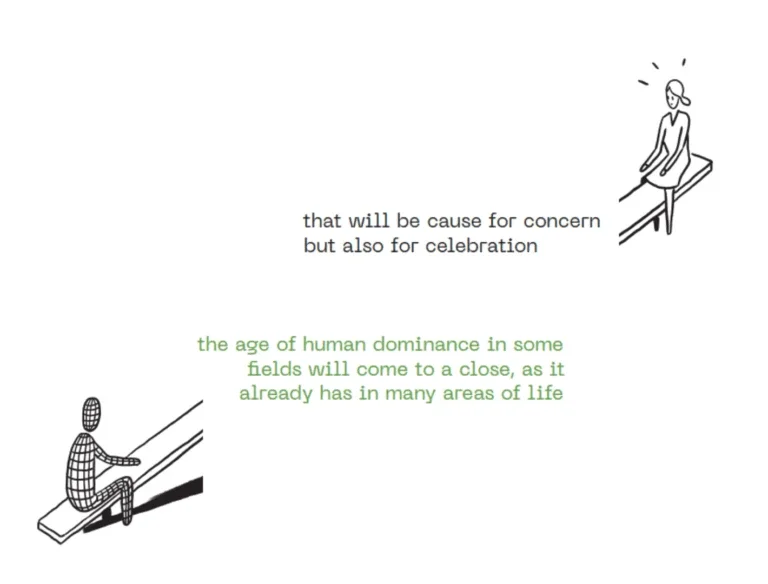
All of that changed with the recent rise of genuine machine-learning techniques proffered by Google’s DeepMind unit. The company’s AlphaZero program was given only the rules of chess—and then played itself: 44 million times. After just four hours of self-training and playing itself, it was able to develop sufficient mastery to become the most successful chess-playing entity—computer or human—in history.
Several things are notable about AlphaZero’s approach. First, rather than evaluating tens of millions of moves, the program analyzed only about 60,000—approaching the much more intuitive analysis of human beings rather than the brute-force methods of its predecessors.
Second, the style of AlphaZero’s play stunned human players, who described it as “beautiful,” “creative” and “intuitive”—words that one would normally associate with human play. Here was a machine with an apparently deep understanding of the game itself, evidencing something very close to human creativity. Being self-taught, AlphaZero was unconstrained by the long history of human styles of play. It discovered not only our human strategies—and by itself!—but also entirely new ones—ones never seen before.
Here is the fascinating, deeper lesson: after a long age of human dominance in a particular intellectual pursuit falls before AI, we don’t turn away from those pursuits where we have been bested.
It’s possible that AlphaZero’s successors may one day develop strategies that are fundamentally incomprehensible to us; but in the meantime, they are magnificent teachers that are expanding humanity’s understanding of the truth of the game in a way no human grand master could. Even the programs that AlphaZero bested—those brute-force approaches thatare themselves better than any human player’s—are, through their wide availability, improving everyone’s game. Somehow, our diminished status doesn’t reduce our love of chess—much in the way that the reality of LeBron James doesn’t diminish our love of playing basketball.
Variations of this story will unfold in every field and creative endeavor. Humanity will be stretched by artificial intelligence, augmented and empowered by it and, in places, bested by it. The age of human dominance in some fields will come to a close, as it already has in many areas of life. That will be cause for concern but also for celebration, because we humans admire excellence and we love to learn; and the rise of AI will provide ample opportunities for both.
Artificial intelligence will provide us with answers we couldn’t have arrived at any other way. We can ensure a humane future with AI by doing what we do best: relentlessly asking questions, imagining alternatives and remembering the power inherent in our choices. We have more than we know.
Related Updates
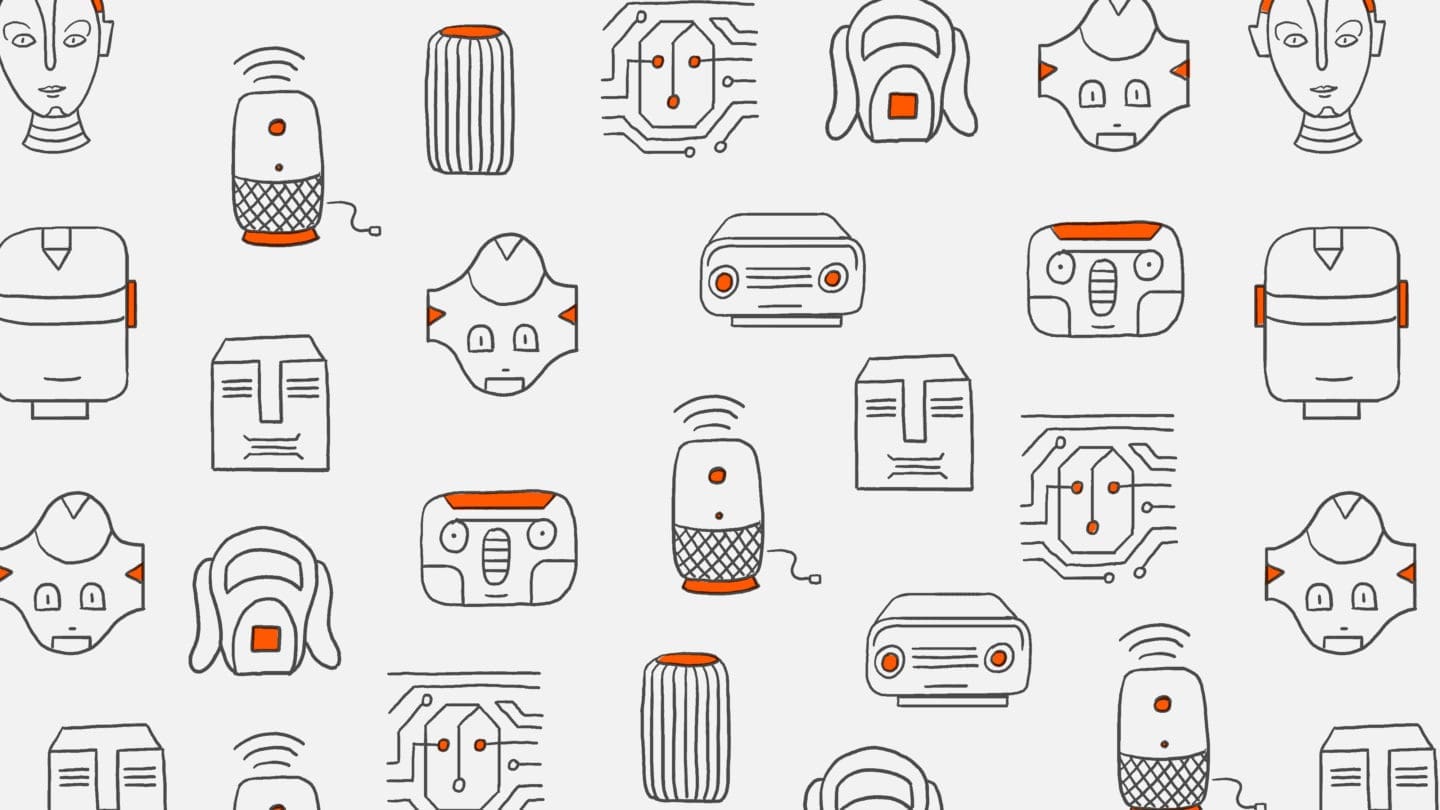
AI+1: Shaping Our Integrated Future
As we speak—and browse, and post photos, and move about—artificial intelligence is transforming the fabric of our lives. It is making life easier, better informed, healthier, more convenient. It also threatens to crimp our freedoms, worsen social disparities, and gives inordinate powers to unseen forces. Both AI’s virtues and risks have been on vivid display […]
More- Report
AI+1: Shaping Our Integrated Future
The Rockefeller Foundation convened a unique group of thinkers and doers at its Bellagio Center in Italy to weigh one of the great challenges of our time: How to harness the powers of machine learning for social good and minimize its harms. The resulting AI + 1 report includes diverse perspectives from top technologists, philosophers, economists, and artists at a critical moment during the current Covid-19 pandemic.Download PDF